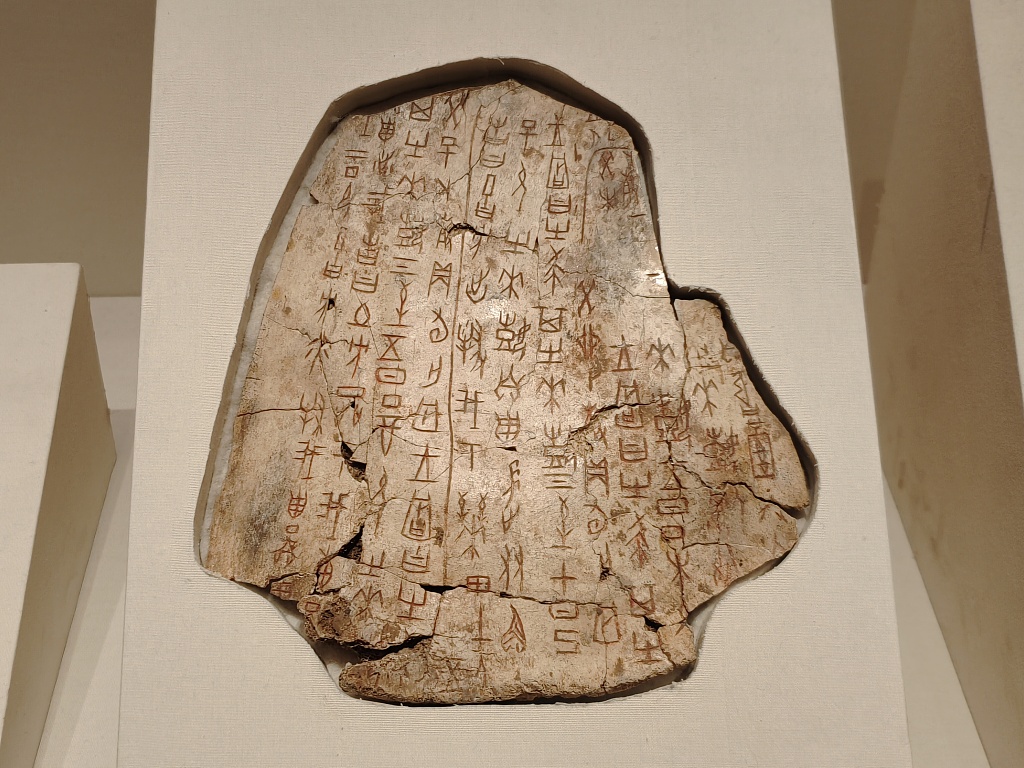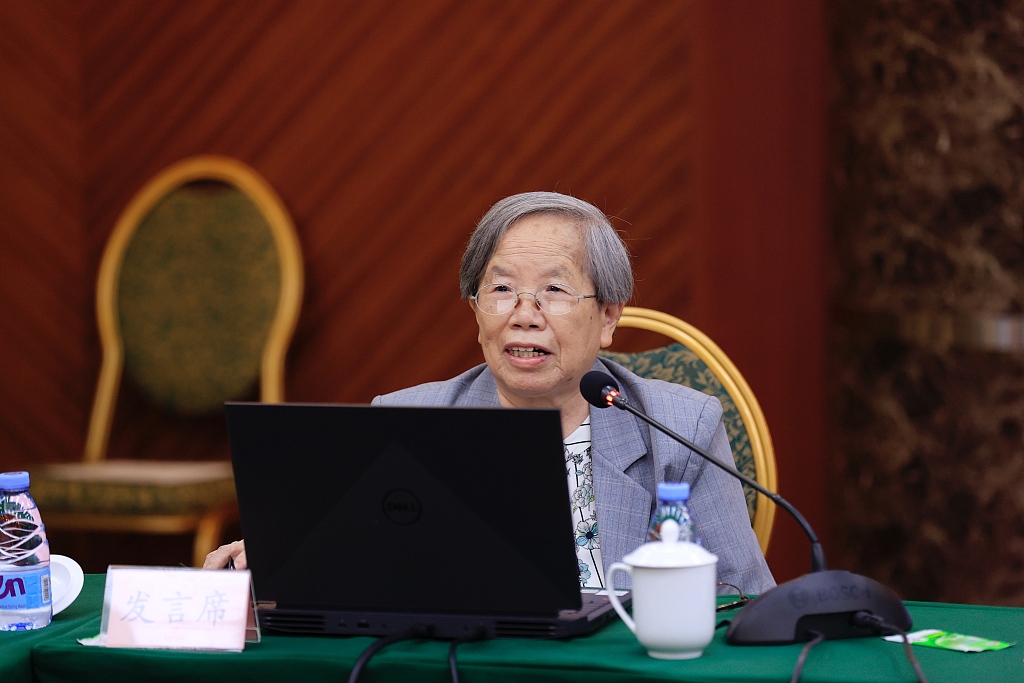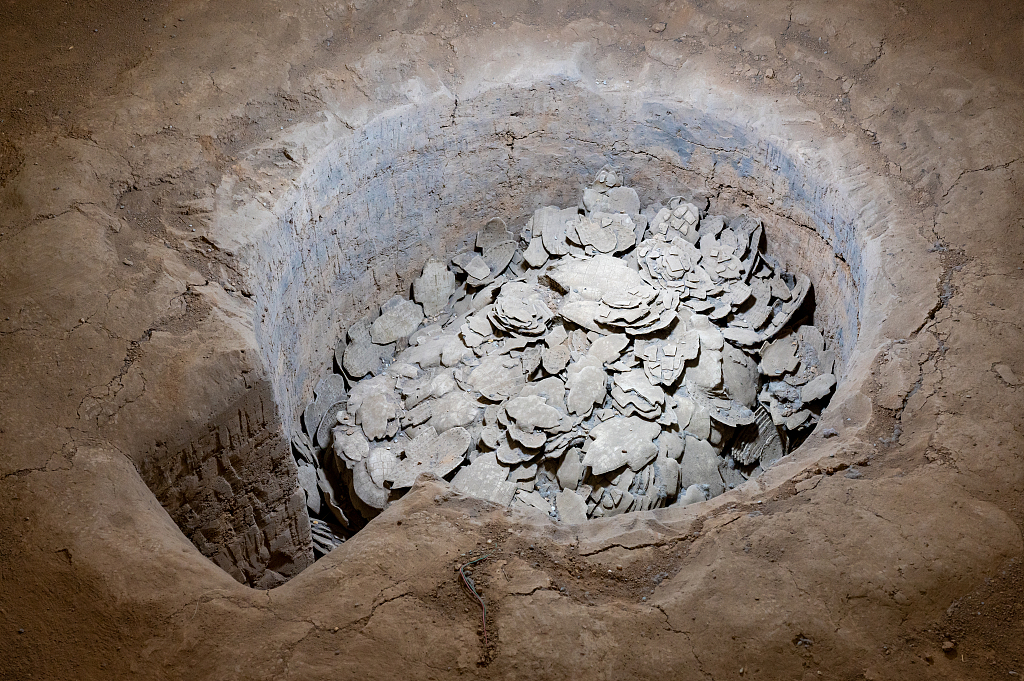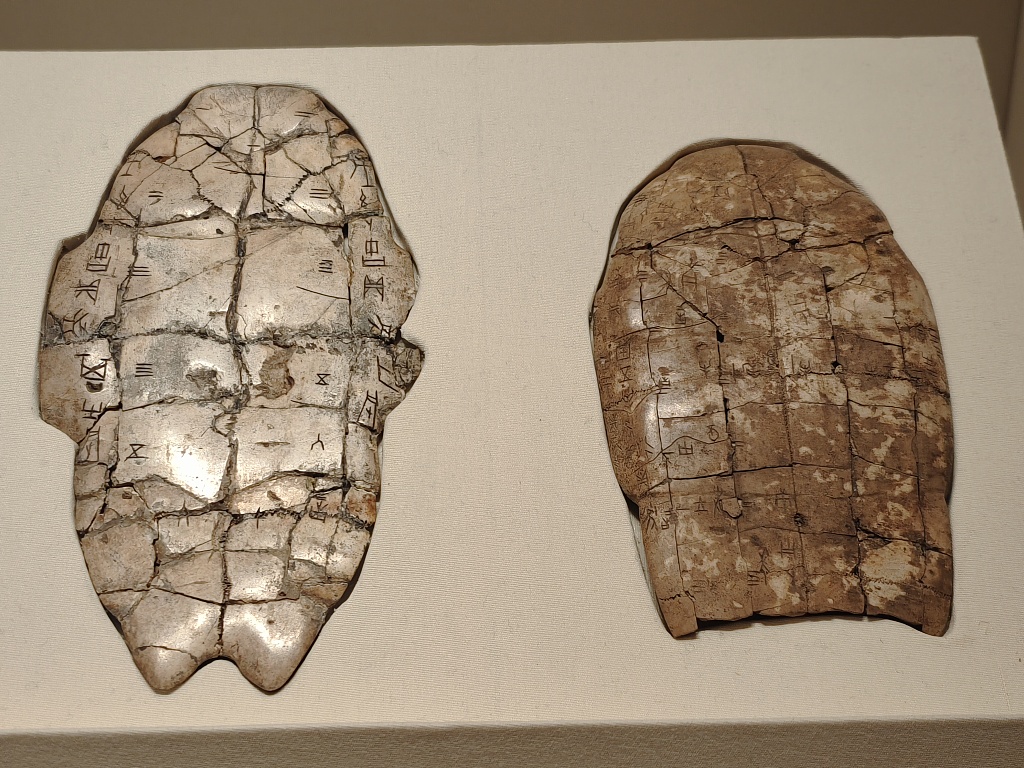
A fragment of oracle bones on display at the National Museum of China in Beijing, March 10, 2023. /CFP
A fragment of oracle bones on display at the National Museum of China in Beijing, March 10, 2023. /CFP
First discovered in 1899 at the Yin Ruins in Anyang, central China's Henan, "Jiaguwen," or the oracle bone inscriptions named for their mysterious "scratches" on bits of animal bones and on tortoise shells, are considered the oldest fully-developed characters as well as the origin of the Chinese characters people use today.
Dating back to China's Shang Dynasty (1600-1046 B.C.), this ancient Chinese language was included in the UNESCO Memory of the World Register in 2017 and has long captured the heart of veteran Chinese archaeologist Liu Yiman.

Chinese archaeologist Liu Yiman attends a seminar in Beijing, August 4, 2022. /CFP
Chinese archaeologist Liu Yiman attends a seminar in Beijing, August 4, 2022. /CFP
Having taken part in two of China's three major archaeological discoveries related to the oracle bone inscriptions over the past decades, Liu, a now-retired archaeologist from the Chinese Academy of Social Sciences, had her first encounter with these scripts in 1973, kindling around half-century long passion for her beloved inscriptions from some 3,000 years ago.

A fragment of oracle bones on display at a museum in Shanghai, July 30, 2022. /CFP
A fragment of oracle bones on display at a museum in Shanghai, July 30, 2022. /CFP
Liu said the discovery of "Jiaguwen" marked a curtain-raiser for China to have its academic institutions conduct archaeological excavations, thus setting the country's archaeological excavations on a scientific track.

An oracle bones pit in Anyang, central China's Henan Province, February 16, 2023. /CFP
An oracle bones pit in Anyang, central China's Henan Province, February 16, 2023. /CFP
For her, the interpretations of these oracle bone characters not only offer clues for the absolute dating – a technique used to calculate the exact age of a specimen – of the Yin Ruins, but also provide evidence to better determine and ascertain the ages of relics from later periods.

Oracle bones on display at the National Museum of China in Beijing, March 10, 2023. /CFP
Oracle bones on display at the National Museum of China in Beijing, March 10, 2023. /CFP
When asked how many oracle bones had been identified so far, Liu Yiman, citing a book published in 2012, replied that in more than 120 years since the first discovery of "Jiaguwen," researchers have found around 4,400 characters on oracle bones and identified about one-third of them, with two-thirds still to be solved.
According to researchers, unlike other world's most famous ancient writing systems, such as the hieroglyphs from ancient Egypt, cuneiforms from ancient Babylon, and Mayan glyphs from Mesoamerica, oracle bone inscriptions are the only ones that did not become extinct in history but still survive thousands of years later in the evolved Chinese characters of today, despite historical changes and social development.